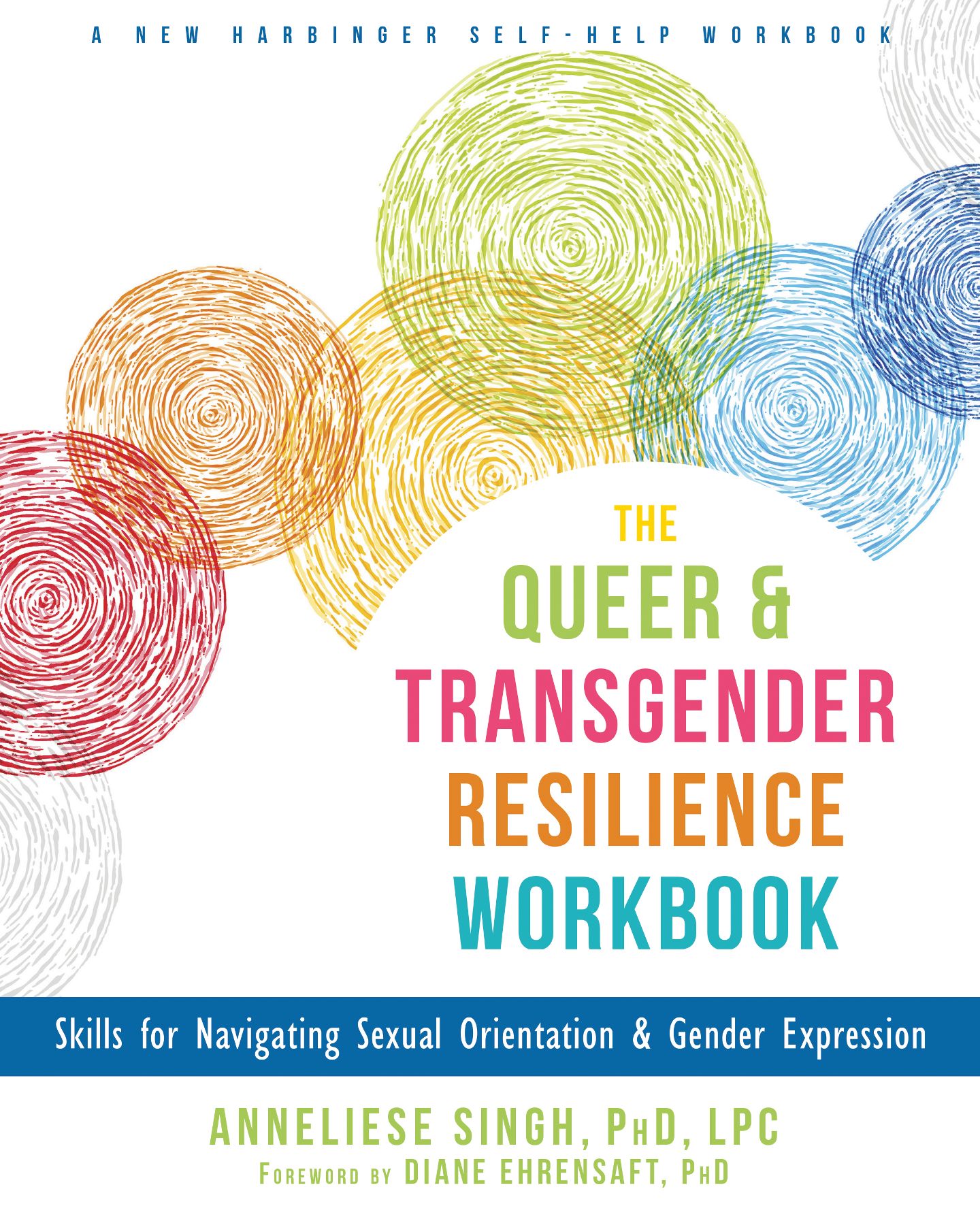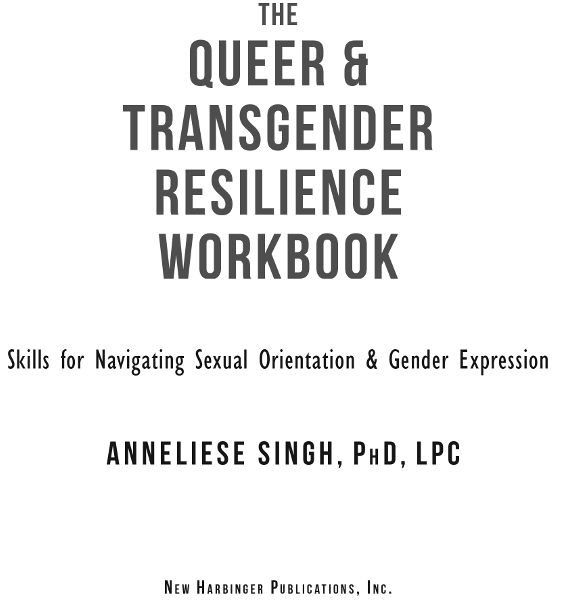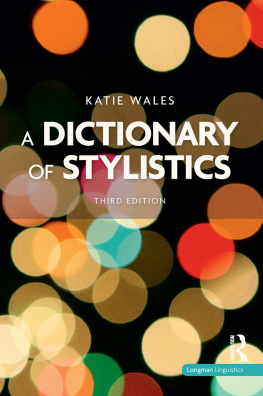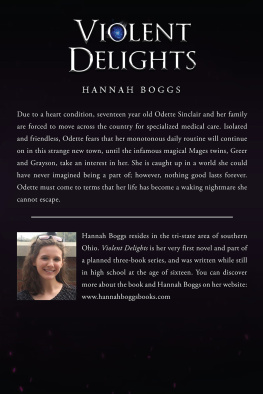
In these times, where queer and trans people are continually the targets of violence, discrimination, and archaic public accommodation policies, it is hopeful and necessary that we focus on power and resilience. The Queer and Transgender Resilience Workbook is a useful and refreshing guide to the possibilities of restoration and transformation for queer and transgender people.
Holiday Simmons, MSW, social justice advocate, facilitator, public speaker, and healer
We each have an opportunity to explore ourselves profoundly as we evolve in our lives as queer and trans people, and this workbook provides unique and engaging guidance. Enjoy exploring your resilient self!
Danielle Castro, MA, MFT, director of research for the Center of Excellence for Transgender Health at the University of California, San Francisco

Publishers Note
This publication is designed to provide accurate and authoritative information in regard to the subject matter covered. It is sold with the understanding that the publisher is not engaged in rendering psychological, financial, legal, or other professional services. If expert assistance or counseling is needed, the services of a competent professional should be sought.
Distributed in Canada by Raincoast Books
Copyright 2018 by Anneliese A. Singh
New Harbinger Publications, Inc.
5674 Shattuck Avenue
Oakland, CA 94609
www.newharbinger.com
Cover design by Amy Shoup
Acquired by Ryan Buresh
Edited by Kristi Hein
All Rights Reserved
Library of Congress Cataloging-in-Publication Data
Names: Singh, Anneliese A., author.
Title: The queer and transgender resilience workbook : skills for navigating sexual orientation and gender expression / Anneliese Singh, PhD, LPC.
Description: Oakland, CA : New Harbinger Publications, Inc., [2018] | Includes bibliographical references.
Identifiers: LCCN 2017058868 (print) | LCCN 2017060685 (ebook) | ISBN 9781626259478 (PDF e-book) | ISBN 9781626259485 (ePub) | ISBN 9781626259461 (pbk. : alk. paper)
Subjects: LCSH: Gays--Identity. | Transgender people--Identity. | Resilience (Personality trait) | Self-esteem. | Sexual orientation. | Gender nonconformity.
Classification: LCC HQ76.25 (ebook) | LCC HQ76.25 .S566 2018 (print) | DDC 306.76--dc23
LC record available at https://lccn.loc.gov/2017058868
For Lenny Zenith, Jeanine Grimes, Cherie Schwab, the city of New Orleans, and the country of Indiayou all taught me everything I needed to know about being resilient and embracing the queer and trans parts of me I was taught by society to hide.
For my beloved, Lauren Lukkarilaeach step with you is a sacred unfolding that not only makes me a better person but also helps me be more of who I truly am. I love you with all of me!
For the queer and trans community of Atlantamay we all continue to manifest the liberation movements rooted in beloved community, equity, and justice.
For all the queer and trans liberation movements around the worldour lives and histories are ancient and beautiful. May we remember our true and deepest liberation within ourselves, and with one another, more and more.Contents
Foreword by Diane Ehrensaft vii
Introduction: Why Resilience Is Important for Queer and Trans People 1
1. Getting Real: Defining Your LGBTQ Self in a World That Demands Conformity 7
2. You Are More Than Your Gender and Sexual Orientation 29
3. Further Identifying Negative Messages 53
4. Knowing Your Self-Worth 71
5. Standing Up for Yourself 93
6. Affirming and Enjoying Your Body 109
7. Building Relationships and Creating Community 125
8. Getting Support and Knowing Your Resources 141
9. Getting Inspired 165
10. Making Change and Giving Back 177
11. Growing and Thriving 191
Acknowledgments 205
Resources 207
References 209
Foreword
by Diane Ehrensaft
It is afternoon, June 23, 2017. With great pleasure, I am sitting at my computer in Oakland, California, writing the foreword to The Queer and Trans Resilience Workbook. This day also marks the start of the 45th annual San Francisco Pride celebration, opening with the Trans March later today. And what is the theme of this years Trans March? Celebrating Resilience with Love and Resistancea title chosen, Im speculating, without ever having seen Anneliese Singhs inspiring workbook, given that it is not yet in print. My point: resilience is in the air, having been discovered by so many of us as the crux of health, well-being, and transcendence for the LGBTQ community. For so many years, in trying to make a more equitable and accepting world, we have focused on teaching tolerance. Now it is time to teach resiliencethe inner strength and centered sense of self and community that is never a given but rather a communal accomplishment.
Allow me to go back in time for a moment. First let me situate myself. I am a cisgender straight woman, pronouns she/her/hers, a dyed-in-the-wool feminist of the 1960s, a mother of a grown-up gay son (once a gender expansive little boy), and the director of mental health of the Child and Adolescent Gender Center. So now lets visit 1967. I was a senior in college and graduating from the honors psych program at University of Michigan. Our faculty advisor called a meeting of all the women in the program. He sat us all down and advised us not to apply to graduate school because we would only take up mens spaces and later drop out to get married and have babies. He showed us a graph of dropout rates of female compared to male graduate students to prove his point. We were stunned, but not one of us stormed out or stormed at him in the face of his egregious sexist macroaggression. Instead, our revenge was to go on to get PhDsevery single one of us. In a way, we exercised our resilience through action, but not in a way that would stop that same faculty advisor from delivering the same outrageous message to the next cohort of women in the honors psych program. If only wed had resilience building similar to what Singh so expertly offers to the LGBTQ community in the workbook you are about to embark on, it could have been better.
LGBTQ resiliencewhats it all about? Its about coming out to yourself and then coming out to others, on your own timeline. Its about recognizing the evolution of gender and sexuality across your lifetimewho you are today may change over time, and thats something to stand up for. Its about finding a positive mirror and using ita reflection, from allies and loved ones, that who you are is authentic, expansive, and to be celebrated, rather than wrong, diminished, and to be rejected. Its about being mindful of the intersectionality in peoples lives and making sure that we dont repeat experiences like what Anneliese Singh reported from her own childhood: As a South Asian, multiracial, Sikh, queer, genderqueer femmeI struggled with my own resilience growing up. Messages abounded that there was something wrong with me, or that I didnt fit inand unfortunately, there was no one around to tell me those things were not true and that my resilience to these experiences was important. Its about recognizing that if someone wants to know your gender or sexuality, it is not for them to say but for you to tell, or choose not to tell.
As you progress through the workbook, you will discover the important difference between homophobia and heterosexism, between transphobia and transnegativity, and between phobias, which are based on fear, and the -ivities and -isms that reflect bad actions. Building resilience requires boots on the ground to confront the bad actions that happen in everyday life. Ideally, breakdown of the phobias will organically follow.
Next page







